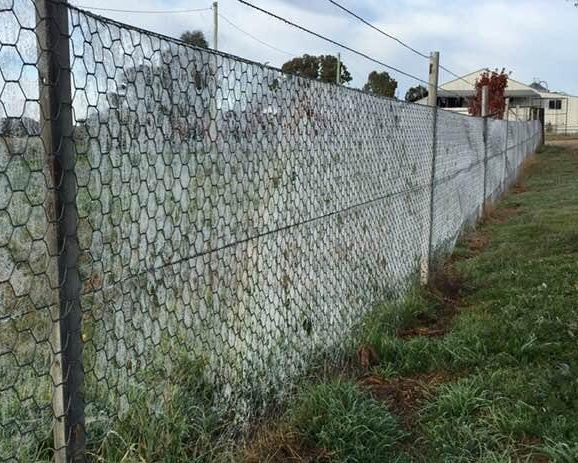
Sheet spiders have turned a fence snow white in Bigga, NSW. Photo: Megan Picker.
Just when you thought life Down Under couldn’t get any crazier with flies and mozzies, millipedes and mice invading our homes in plague proportions in 2021, now spiders are in the limelight. It’s almost biblical.
If you’ve noticed more of our eight-legged friends – or foes, depending on your arachnophobic fear level – and their webs around the house, you’re not alone.
Recent floods and bushfires have driven spiders to higher and drier ground, and the fact we’re all spending more time at home during COVID-19 makes them easier to spot.
Professor Dieter Hochuli from the University of Sydney’s School of Life and Environmental Sciences said recent photos of impressive webs captured by residents near Goulburn, NSW, are an example of how spiders move during a weather event.
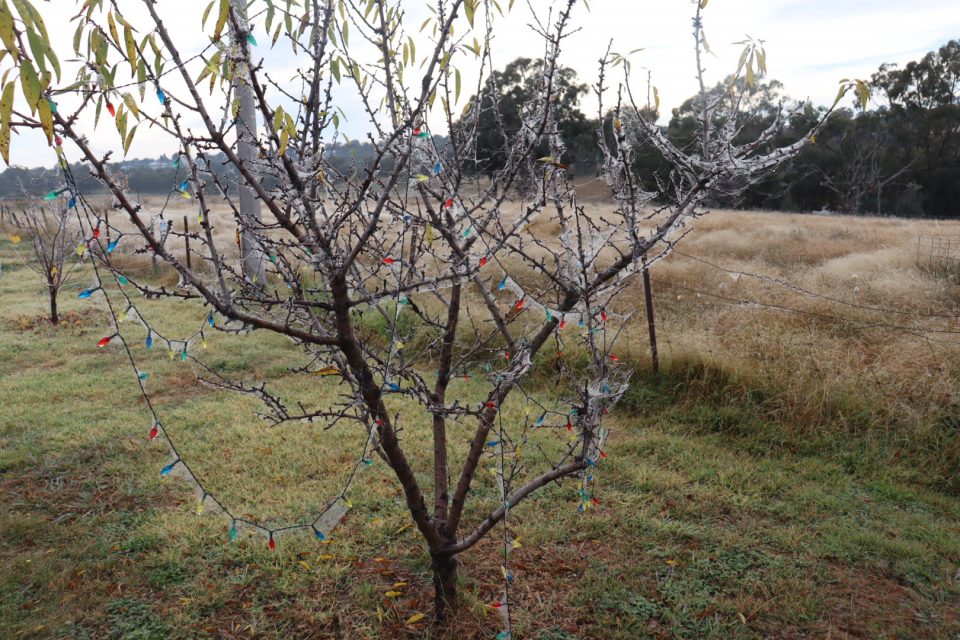
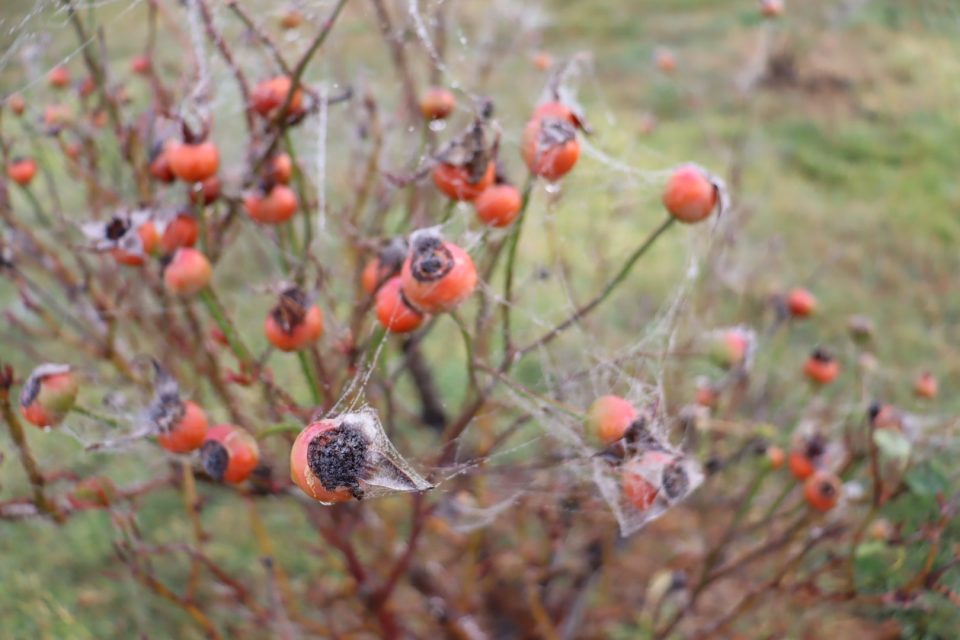

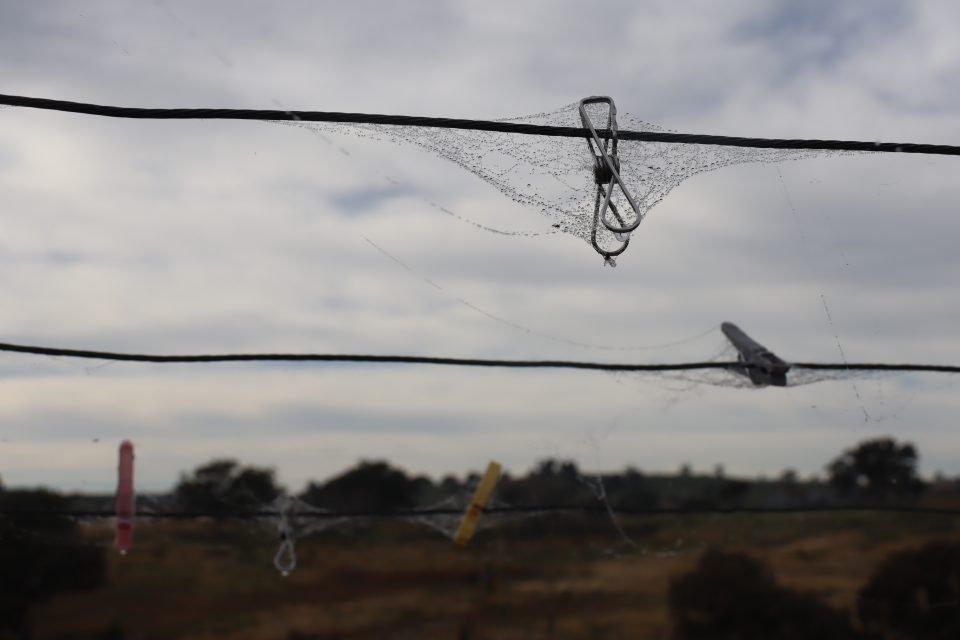

Following a heavy dew, a common group of small spiders – known as sheet spiders – created a display reminiscent of Halloween in the rural village of Bigga, turning fences, washing lines, trees and rose bushes snow white with their webs.
“It looks like a group of sheet web spiders felt the heavy dew was a bit much and moved their webs off the ground where they normally catch prey,” said Professor Hochuli.
“These spiders are tightly linked to climate so whether it’s a bit of rain, heat or cold, they’ll respond very quickly.
“Heavy dew means the sticky threads on their webs don’t work as well so going vertical rather than horizontal is more efficient.”
However, these new photos are nowhere near as unsettling as those taken by residents in Wagga Wagga, in 2012, of sheet spiders blanketing the ground as far as the eye could see following heavy rain.
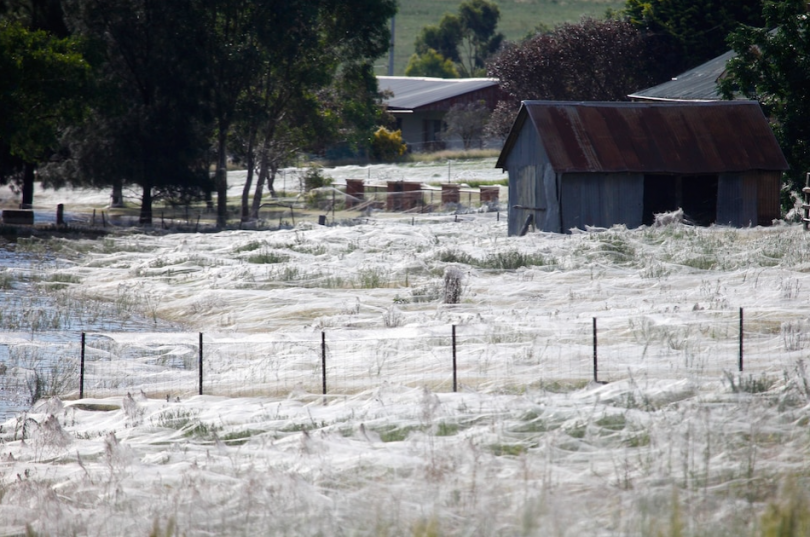
Webs from sheet spiders blanket paddocks near Wagga Wagga in 2012. Photo: National Geographic/Lukas Coch.
Perhaps what’s most unsettling is that the smaller webs cast by sheet spiders in Bigga would have required thousands of spiders. So imagine the numbers in Wagga Wagga nine years ago.
“This would have been a massive group,” said Professor Hochuli, looking at the photos from Bigga.
“A lot of these spiders produce communal webs, which just means all the spiders work together to build a massive trap. So hopefully the people who took these photos aren’t arachnophobes.”
But don’t be too quick to kill these critters because Professor Hochuli says sheet spiders are the good guys and won’t cause any harm to humans.
“These spiders are always there, it’s just that all of a sudden we’re noticing them,” he said.
“And if we lost them, we’d miss them desperately because of the role they play by eating things that eat our gardens or food plants: flies, cockroaches, whatever they catch.”

Orange wasps have been feeding on huntsman spiders in Sydney. Photo: The Daily Mail UK.
Professor Hochuli said he and his research team have been inundated with photos and questions from people who have noticed all manner of creatures – from spiders to birds and sea slugs – during COVID-19.
The response has been so amazing that Professor Hochuli, as well as an environmental philosopher, a researcher from Taronga Zoo, and two designers from the University of Technology Sydney have created a website to bring these discoveries to life.
“The Urban Field Naturalist Project is about bringing storytelling back to science,” he said.
“We’re keen to get away from the really hardcore side of science because that’s our day job, and experiments or data don’t enthuse a lot of people. It’s the photo of a giant wasp carrying a paralysed spider [as seen above] that makes the science interesting.”
As is the circle of life, Professor Hochuli said orange wasps have been enjoying the influx of spiders, in particular the huntsmans found in Sydney suburbs (shudders).








